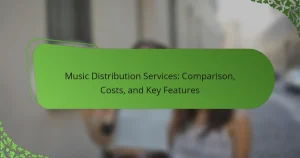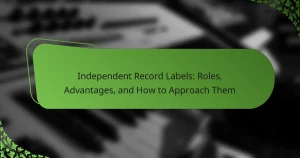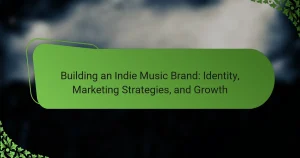Indie music collaboration platforms enhance creativity and connectivity among artists. They offer essential features like project management tools, real-time communication, and community engagement. Success stories illustrate how platforms like SoundBetter and Splice have led to Grammy-winning tracks and viral hits. Understanding regional user experiences can further inform how artists navigate these platforms for optimal collaboration.
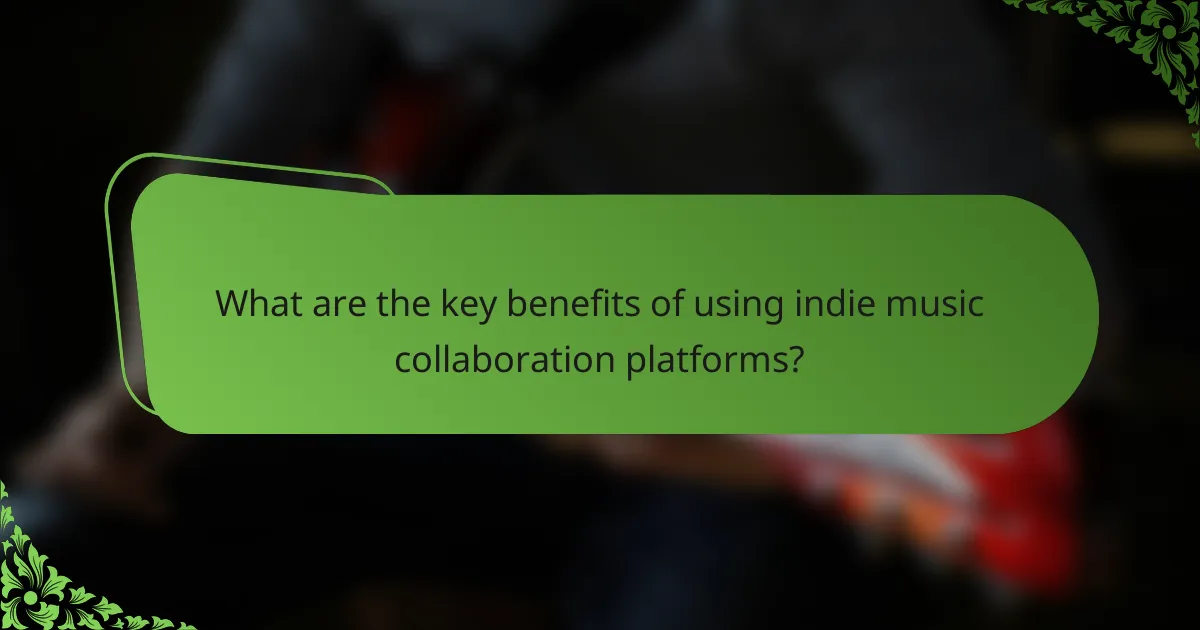
What are the key benefits of using indie music collaboration platforms?
Indie music collaboration platforms offer numerous benefits that enhance creativity and connectivity. They provide access to a diverse pool of artists, enabling unique musical collaborations. These platforms often feature tools for project management, file sharing, and real-time communication, streamlining the creative process. Additionally, they foster community engagement, allowing artists to share experiences and receive feedback. Success stories highlight how these platforms have led to breakthrough projects and increased visibility for emerging artists.
How do these platforms enhance creativity and collaboration?
Indie music collaboration platforms enhance creativity and collaboration by providing tools that facilitate communication, resource sharing, and project management. These platforms allow artists to connect globally, enabling diverse musical influences and ideas. Features like real-time editing, feedback systems, and integrated production tools support seamless collaboration. As a result, musicians can innovate and produce high-quality work collectively, leading to successful projects and unique soundscapes.
What financial advantages do artists gain from these platforms?
Artists gain significant financial advantages from indie music collaboration platforms, including revenue sharing, access to new audiences, and reduced marketing costs. These platforms often facilitate direct sales of music and merchandise, allowing artists to retain a larger portion of revenue compared to traditional models. Additionally, collaboration opportunities can lead to increased exposure and potential for higher earnings through royalties and licensing deals.
How do collaboration platforms expand audience reach for indie musicians?
Collaboration platforms significantly expand audience reach for indie musicians by providing networking opportunities and promotional tools. These platforms enable artists to connect with like-minded creators and share their work with broader audiences. For instance, collaborative projects often lead to cross-promotion, where each artist introduces their respective fan bases to the others. Additionally, many platforms feature built-in marketing tools, such as social media integration and analytics, which help musicians track engagement and optimize their outreach strategies. As a result, indie musicians can leverage these platforms to enhance visibility and grow their listener base effectively.
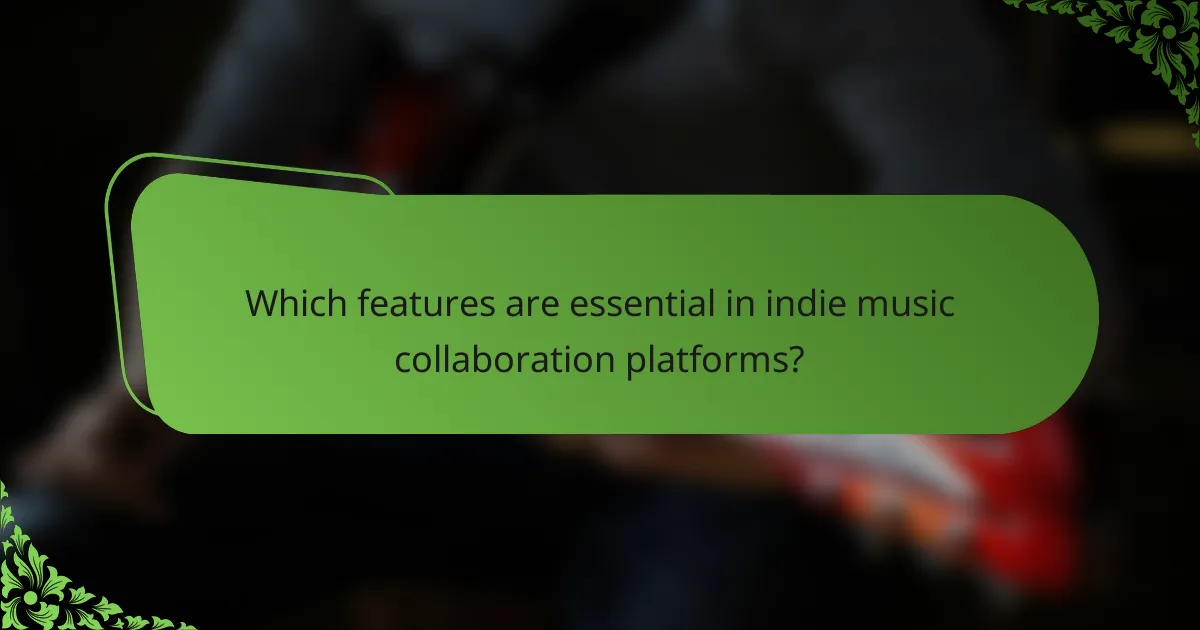
Which features are essential in indie music collaboration platforms?
Essential features in indie music collaboration platforms include user-friendly interfaces, real-time collaboration tools, file sharing capabilities, project management features, and community engagement options. These attributes enhance the creative process, streamline workflows, and foster connections among artists.
What tools facilitate seamless communication among collaborators?
Indie music collaboration platforms utilize tools like messaging systems, file sharing, and project management features to enhance communication among collaborators. These tools streamline discussions, facilitate feedback, and ensure efficient workflow. Popular platforms include Splice, Soundtrap, and BandLab, each offering unique features such as real-time collaboration and version control. By integrating these tools, musicians can coordinate effectively, leading to successful projects and creative synergy.
How do platforms support file sharing and project management?
Indie music collaboration platforms support file sharing and project management through integrated tools that enhance workflow. These platforms offer features like cloud storage, real-time collaboration, and task management systems. For example, musicians can upload tracks, share feedback, and assign tasks within a single interface. This streamlines the creative process and fosters teamwork, leading to successful project outcomes.
What role do built-in distribution services play in collaboration platforms?
Built-in distribution services enhance collaboration platforms by streamlining the process of sharing music. These services allow artists to reach wider audiences efficiently. They often integrate with various streaming services, simplifying distribution logistics. As a result, musicians can focus on creativity rather than administrative tasks. This feature is vital for independent artists aiming for success in a competitive market.
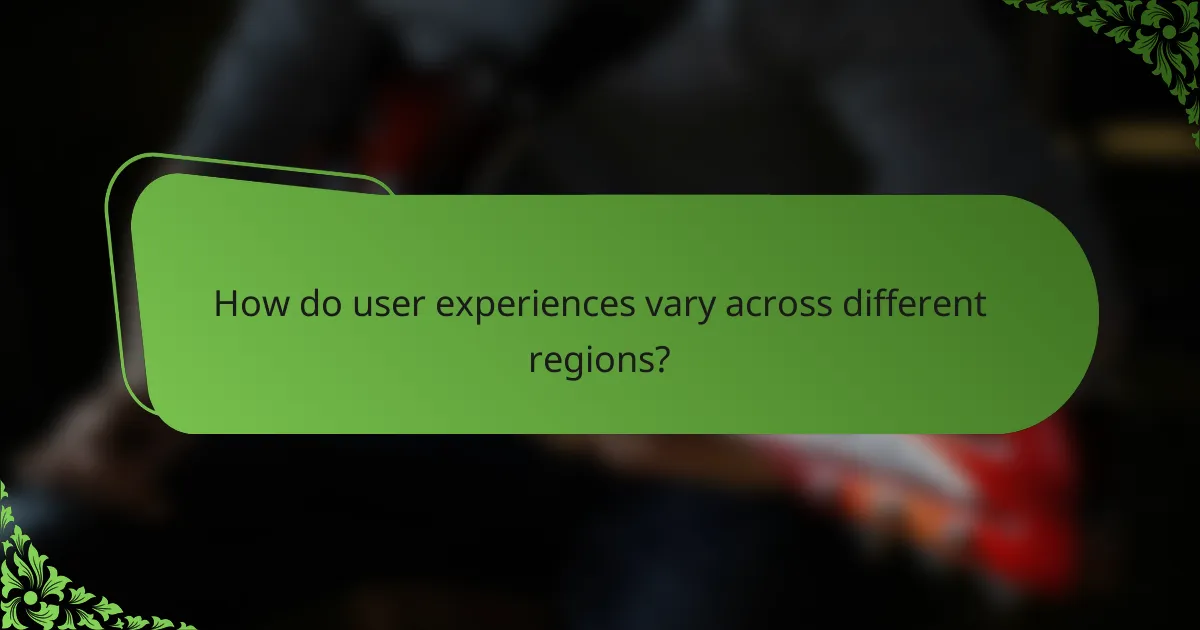
How do user experiences vary across different regions?
User experiences on indie music collaboration platforms vary significantly across regions due to cultural preferences and local music scenes. For instance, North American users may prioritize networking and exposure, while European users often focus on collaborative features and genre-specific communities. Additionally, platforms may offer localized content and support, enhancing user engagement in specific areas. These regional differences shape how artists connect and collaborate, influencing their success stories and overall satisfaction with the platforms.
What challenges do artists face in North America when using these platforms?
Artists in North America face several challenges when using indie music collaboration platforms. Key issues include limited visibility, which makes it difficult for artists to gain traction. Many platforms have overwhelming competition, leading to a saturation of similar content. Additionally, artists often struggle with monetization, as revenue-sharing models can be unfavorable. Technical barriers, such as navigating complex interfaces, can also hinder effective collaboration. Lastly, inconsistent user engagement can affect the sustainability of collaborative efforts.
How does the perception of collaboration platforms differ in Europe?
The perception of collaboration platforms in Europe often emphasizes user privacy, data security, and community engagement. European users prefer platforms that align with GDPR regulations, ensuring their data is protected. Additionally, there is a strong focus on features that facilitate local collaborations and support for indie artists. Success stories from Europe highlight how these platforms foster connections among musicians, leading to innovative projects and increased visibility in the music scene.
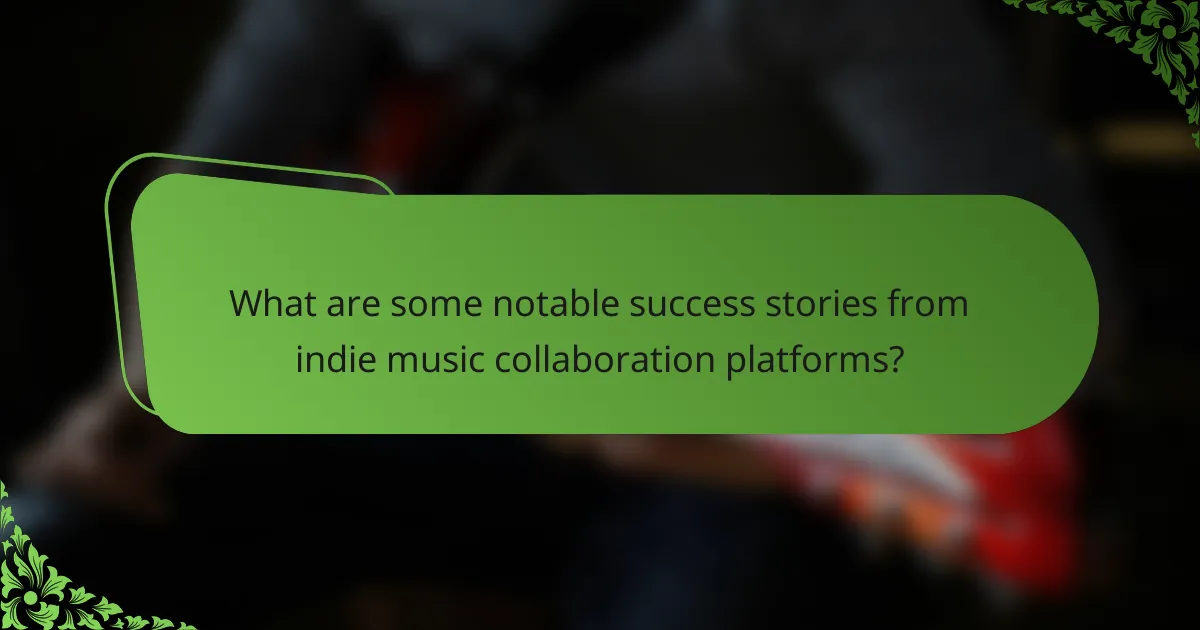
What are some notable success stories from indie music collaboration platforms?
Indie music collaboration platforms have enabled numerous artists to achieve remarkable success. For instance, the platform SoundBetter has facilitated collaborations leading to Grammy-winning tracks. Another example is Splice, which has helped emerging artists gain exposure and connect with established musicians, resulting in viral hits. Platforms like BandLab have also empowered musicians to create and share music globally, fostering a community that supports independent creativity. These success stories highlight the transformative potential of collaboration in the indie music scene.
Which artists have gained recognition through these platforms?
Numerous artists have gained recognition through indie music collaboration platforms. Notable examples include Chance the Rapper, who utilized platforms for exposure, and Billie Eilish, who collaborated online before mainstream success. These platforms enhance visibility and connect artists with diverse audiences.
How have collaborations led to successful album releases?
Collaborations have significantly enhanced album releases by combining diverse talents and resources. Indie music collaboration platforms facilitate connections between artists, leading to innovative sounds and broader audience reach. Successful examples include joint projects that blend genres, resulting in unique musical experiences. These collaborations often harness the strengths of each artist, maximizing creativity and production quality.
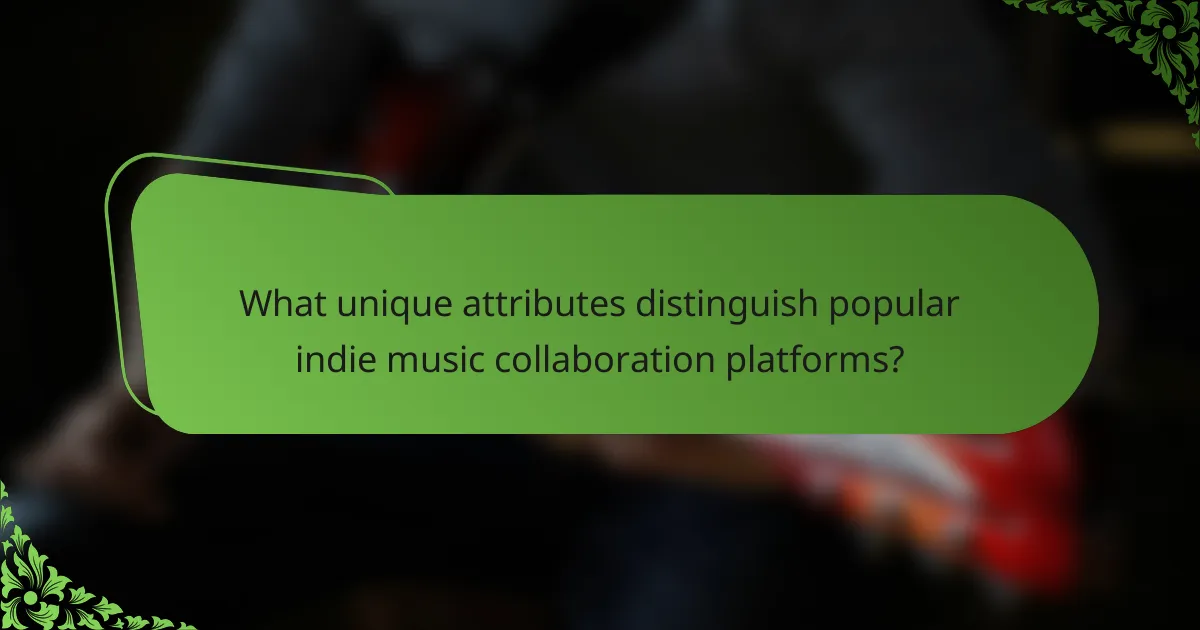
What unique attributes distinguish popular indie music collaboration platforms?
Popular indie music collaboration platforms are distinguished by unique attributes such as user-friendly interfaces, diverse genre support, and integrated tools for real-time collaboration. These features enhance the creative process, allowing artists to connect and innovate efficiently. Unique attributes often include community-driven feedback systems and customizable project management features, fostering a supportive environment for emerging talent. As a result, these platforms not only facilitate music creation but also build lasting networks among artists.
How do specific platforms cater to niche genres or communities?
Indie music collaboration platforms effectively cater to niche genres by providing tailored features and community support. These platforms often include genre-specific tools, allowing artists to connect and collaborate based on shared musical interests. For instance, platforms like BandLab and Soundtrap focus on user-friendly interfaces that facilitate real-time collaboration, making it easier for indie musicians to create and share their work. Additionally, success stories from these platforms highlight how artists have gained exposure and built communities around niche genres, showcasing the platforms’ impact on indie music culture.
What innovative features are offered by emerging platforms?
Emerging indie music collaboration platforms offer innovative features that enhance creativity and connectivity. These platforms provide tools for real-time collaboration, cloud storage for easy access to projects, and integrated social networking for artist promotion.
Additionally, many platforms incorporate AI-driven suggestions for songwriting and production, enabling artists to explore new musical directions. Unique features like virtual jam sessions allow musicians to collaborate remotely, fostering a global community.
As a result, these platforms not only streamline the creative process but also expand the reach of indie artists, making it easier to share their work and connect with audiences.
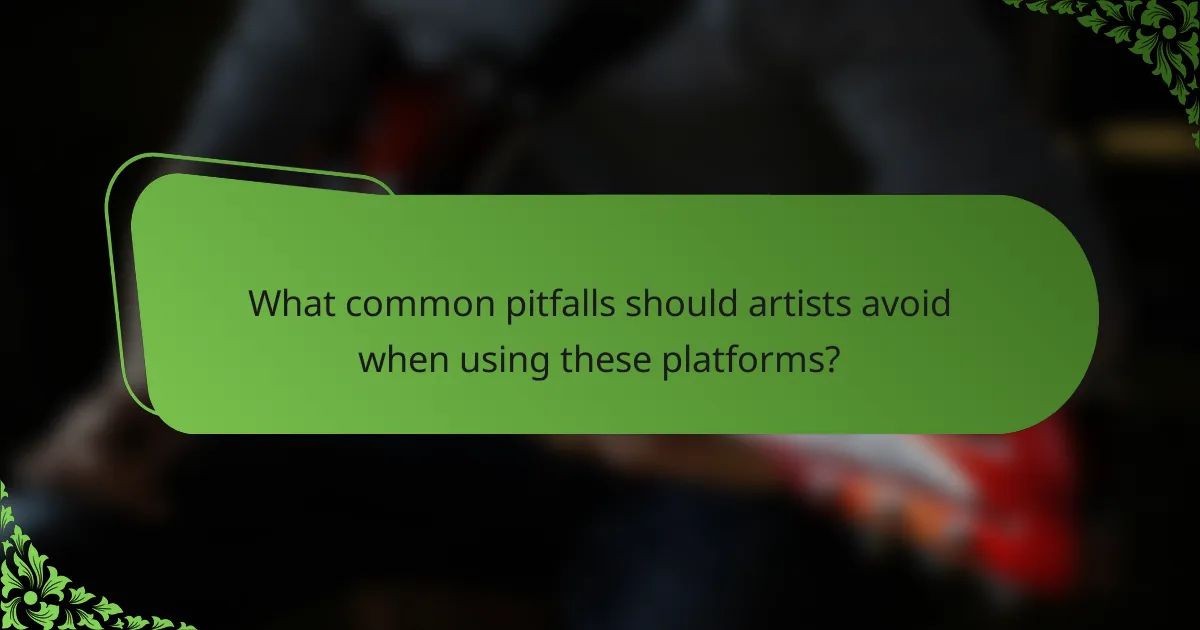
What common pitfalls should artists avoid when using these platforms?
Artists should avoid common pitfalls such as lack of clear communication, neglecting copyright issues, and failing to set realistic expectations. Clear communication fosters collaboration, while understanding copyright protects creative work. Setting realistic expectations ensures a positive experience and successful outcomes.
How can artists ensure fair credit and compensation in collaborations?
Artists can ensure fair credit and compensation in collaborations by using indie music collaboration platforms that provide clear agreements and transparency. These platforms often feature tools for tracking contributions and revenue sharing, which helps establish trust among collaborators. Success stories highlight how artists have effectively used these platforms to negotiate fair terms and receive proper recognition for their work. By leveraging these features, artists can protect their rights and foster successful partnerships.
What strategies can be employed to maintain creative control?
To maintain creative control in indie music collaborations, establish clear agreements and communication. Define roles, responsibilities, and expectations upfront. Utilize collaborative tools that allow for transparency and feedback. Regular check-ins can help ensure alignment and address any concerns promptly.
What best practices should artists follow to maximize collaboration success?
Artists should prioritize clear communication and mutual respect to maximize collaboration success. Establishing shared goals and deadlines fosters accountability. Utilizing indie music collaboration platforms enhances networking opportunities and resource sharing. Embracing feedback and adaptability leads to creative growth. Celebrating milestones strengthens team morale and commitment.
